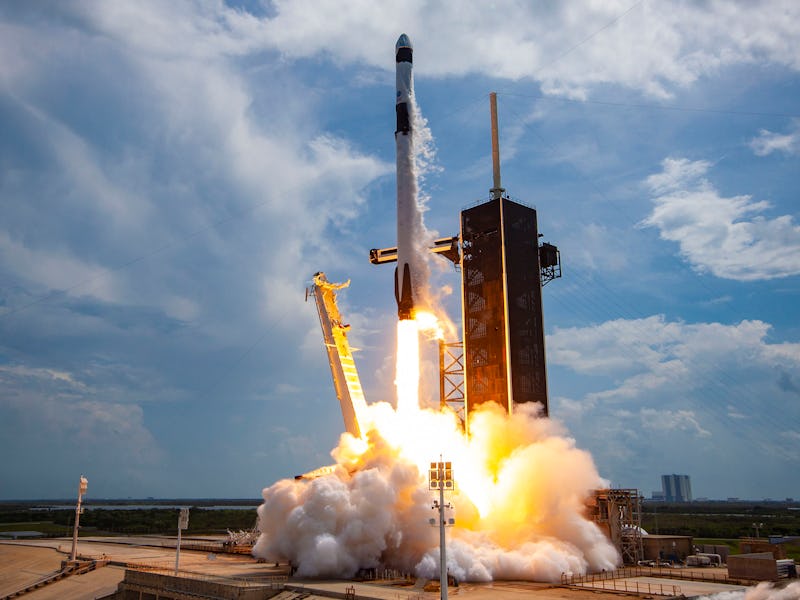SpaceX Starlink: next mission will debut Uber-like satellite ridesharing
The company's internet connectivity constellation will feature a couple less satellites in its next launch, in favor of a companion.

SpaceX's next mission is set to debut a major new capability for satellite launches.
The company's next Starlink launch, scheduled for June 13 at 5:21 a.m. Eastern time, will send up 58 satellites to add to the internet connectivity constellation. Eagle-eyed readers may spot that it's two short than the previous eight Starlink launches – that's because it's also carrying three satellites for San Francisco-based firm Planet.
The added satellites are the first to make use of SpaceX's SmallSat Rideshare Program. This system, first announced in August 2019, enables customers to add their satellites in with other launches for as low as $1 million per launch. Think Uber's ridesharing system, but for space-bound satellites. The order page lets users choose which kind of orbit they want (sun-synchronous, polar or low-Earth), the payload mass, and the estimated launch window to produce a quote.
It's another step toward making space commercially available to all. The emergent second space race has seen private companies like SpaceX and Blue Origin work to reduce the costs associated with sending satellites into space. SpaceX has worked to save the booster from each rocket launch, for example, a technique that could save $46.5 million from the estimated $62 million price tag of a Falcon 9 launch.
Saturday's launch is another step toward opening up space. The team's first customer is Planet, which will send up SkySats 16-18 with the Starlink mission. These three craft will support the other 15 SkySats, all of which are used to collect imagery of Earth's surface. The first 15 are in sun-synchronous orbit, which as the name implies means they always have a view of the Earth at the same time as the sun is beaming down. The next three will operate at a mid-inclination orbit of 53 degrees, complementing the first 15 with more precise imagery.
Plant's creation hitching a ride on the Starlink stack.
The mission will send up the three satellites, plus the other 58 Starlink craft, from Cape Canaveral Air Force Base in Florida. A second batch of three will launch from the same base sometime in the summer, also making use of SpaceX's ridesharing program.
The Falcon 9 used for this mission has flown twice before. The first time was in December 2019, supporting the 19th Commercial Resupply Service mission for NASA. This sent up cargo to support projects at the International Space Station. The second time was for the next subsequent resupply mission, which took off in March 2020 and marked the end of that contract.
Beyond demonstrating the new rideshare capability, the mission will also add to the growing Starlink constellation. This is designed to offer high-speed, low-latency internet to anyone with a view of the satellites. SpaceX has so far sent up 480 production design satellites for the constellation, the first set launching in May 2019, and it's expected to roll out a beta test later this year.
The Inverse analysis – Space is about to become big business. Morgan Stanley claimed in July 2019 that the global space industry's revenue could jump from $350 billion today to over $1 trillion by 2040. While crewed trips to the moon and a city on Mars are cool and eye-catching, it could be in satellite launches where this new space race has some of its biggest effects.
SpaceX's approach is not the only one favored in this new race. Rocket Lab has developed a smaller Electron rocket, designed to send up smaller payloads per launch. This means customers won't need to wait and hitch a ride on a suitable launch, providing greater flexibility.
As more commercially-operated rockets take to the skies, this new industry is rapidly taking shape.